Winter tends to be the best season to look for animal tracks as snow and wet mud help to preserve the prints and the undergrowth is still quite bare.
When identifying tracks, remember that size can vary depending on what the animal was doing – animals climbing a bank, leaping or running may have slipped, leaving bigger tracks. On harder ground, some of the pads or claws may not register.
Confusion is also more likely where several tracks are imposed on top of, or close to, each other. So, it’s best to base your identification on clear tracks. Where this isn’t possible, think carefully about any factors that may complicate your identification.
Muddy paths is a good place to start looking for wildlife tracks as the softer ground will enable the animal to leave a clearer print for identification. Try visiting your local woodland, country trails or riverbanks and see what you can spot.
Learn how to identify animal tracks in winter in the British countryside with BBC Wildlife Magazine's handy illustrated wildlife guide.
How to identify wildlife tracks
Otter
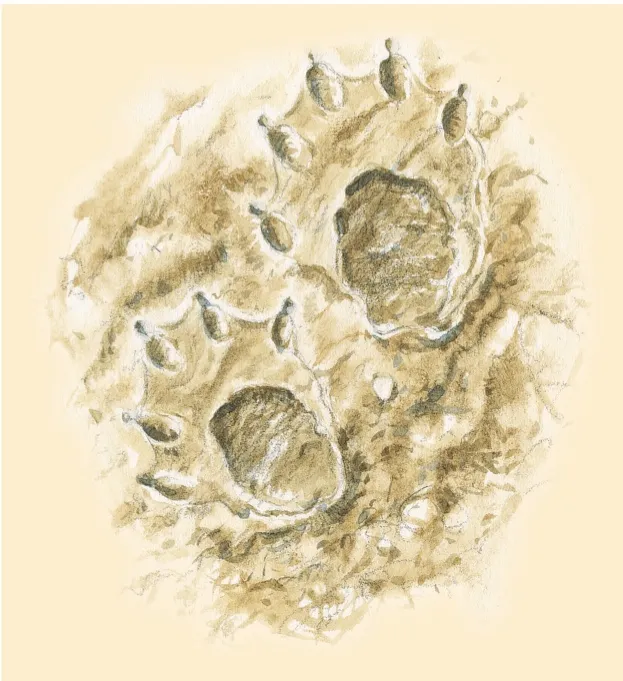
Otter tracks are webbed and large (hind foot up to 60mm wide and 90mm long, fore foot a little shorter) with five toes and a large rear pad. Some toes and the webs may not be visible.
Claw marks are rarely visible, and usually merge with the toe pad. In soft mud, drag marks left by the tail may also be seen.
Mink
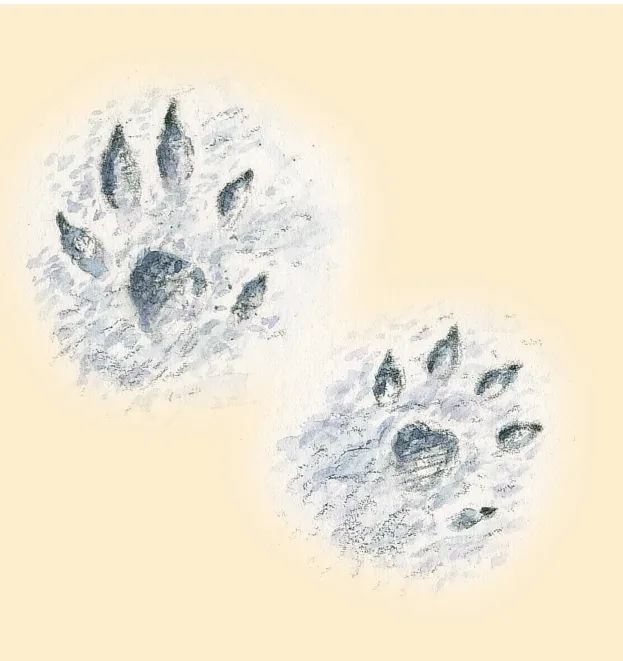
These small carnivores all have similar tracks with five toes splayed in a star shape. Claw marks may be visible, especially in soft ground, though they often merge with the toe pads.
Males of all species are significantly larger than females. There is considerable overlap in the size of prints, ranging from 10mm wide by 13mm long in weasels to 35mm wide by 40mm long in pine martens.
Fox, cat and dog
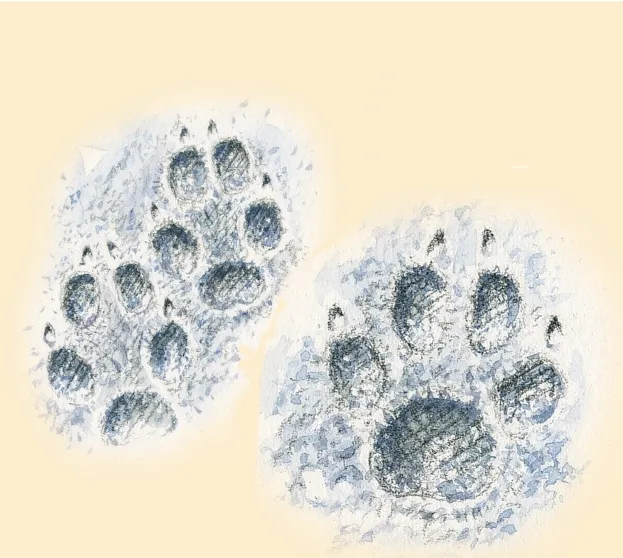
Foxes, dogs and cats all have four symmetrical toe pads with two in front and two to the side.
Cats have retractile claws so leave no claw prints, but dogs and foxes do. Cats have a small rear pad with two indentations at the back.
Fox tracks are typically diamond-shaped and narrow (50mm long by 35mm wide). Occasionally, it is possible to see impressions of hairs between the pads. Fox trails are more purposeful than the erratic ones left by dogs.
Dog tracks are squarer than a fox’s but a similar size. The rear pad is triangular and larger than the toe pads.
Both dog and cat tracks vary in size. A wildcat’s are bigger than those of a domestic cat, but it’s impossible to tell them apart.
Roe deer (top), muntjac (left), and sheep (right)
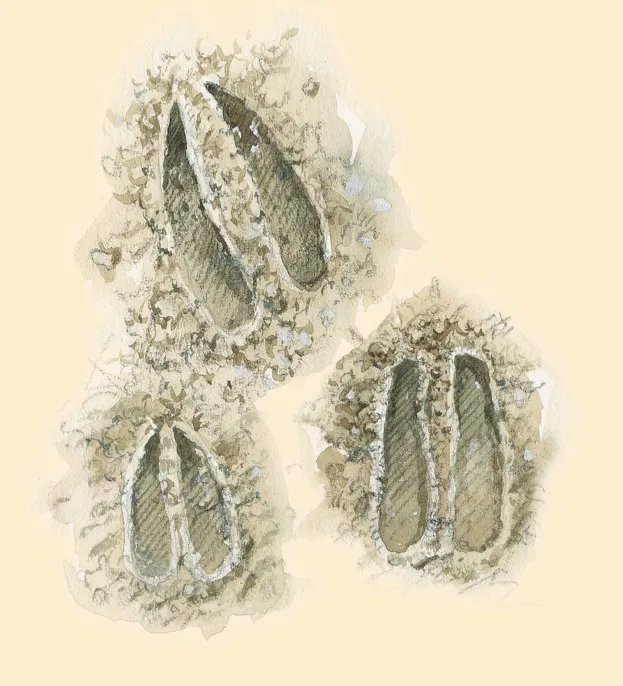
Both deer and sheep have cloven hooves. Different species of deer are difficult to tell apart because there is considerable overlap in size of tracks, with males of each species having much larger tracks than females and young.
Deer tracks range in length from 30mm in muntjac to 90mm in red deer. Tracks are also variable because they splay on soft mud when dew claws may also show.
About half of muntjac have the outer ‘slot’ longer than the inner. Sheep tend to have more rounded ends to their tracks; if in doubt, look for wool on fences and bushes.
Badger
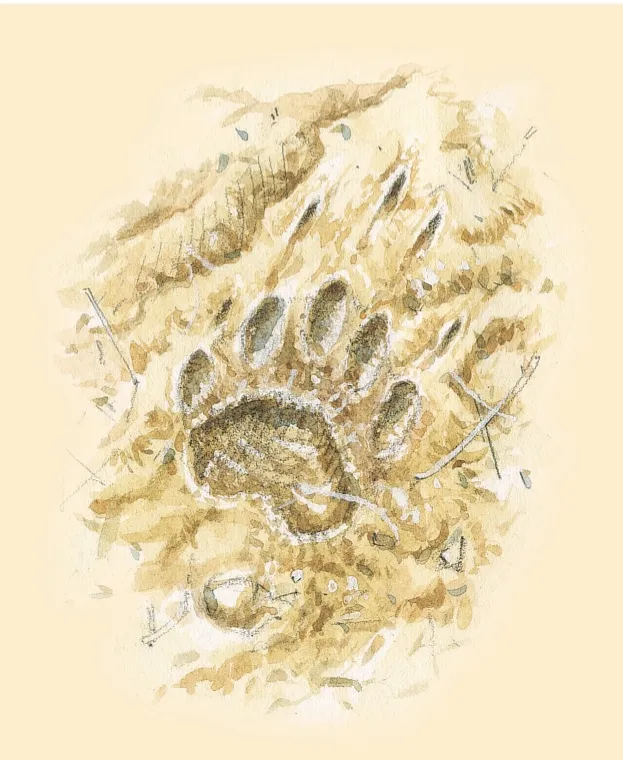
Badgers have very broad footprints (up to 65mm across) with long claws on the fore foot; claws on the hind foot are shorter and closer to the toe pads.
All five toe pads are in front of a broad rear pad. In the fore foot, the inner toes are set further back than in the hind foot.
Brown rat (left) and water vole (right)

Water vole and brown rat tracks are both likely to be seen in soft mud at the water’s edge.
The fore feet can be easily confused – the four toes are splayed out in water voles, but splayed or parallel in rats depending on whether it is a soft or hard surface respectively.
In rats, the hind feet are up to 45mm long and have five toes and a long heel. Water vole hind feet are up to 34mm long and have a shorter heel. The two outer toes are at right angles to the inner three toes (unlike the rat, where toes on the hind foot are parallel). In summer, it’s possible to confuse water voles and young rats.
All illustrations by Brin Edwards (not to exact scale)
